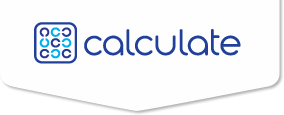What Can Other Colleges Learn from Recent Closures? Staying Current in an Ever-Changing World

While many factors contribute to an institution’s demise — accumulated debt, rising tuition, decreasing populations — one constant remains: a protracted decline in enrollment, one that lasts several recruitment cycles.
Dowling College’s enrollment, for example, fell 62% since 2005. How does an institution — with so much to offer — not only fall into this cycle, but remain there? Again, it’s complicated and each college has its own set of circumstances, but here’s one piece of the problem that can be remedied.
The world has changed and higher education is NOT keeping up
A big statement, yes, but in terms of recruitment this is rampant. Now, more than ever, institutions need to re-think their recruitment strategies to accommodate how college-bound students search for — and assess — schools. If you are not yet blending newer, digital forms of marketing with traditional forms (only those that yield), you are bypassing your audience. Almost all other industries are years into this — it’s what today’s student expect and it’s often how they equate value.
This starts with a shift in perspective, one that views prospective students as consumers (for the recruitment phase) and places your institution in the role of “Best Product on the Market.” As such, you need to put the user first and make it easy for them to fall in love with your “product.”
Start with the research — it’s out there and it gives invaluable insight into student behaviors. Who are your right-fit students and what platforms do they use for college search? Go where they go.
Assess your current strategies to determine yield
If you buy search names, how many enrolled students come from the purchase? Does your website generate leads? It can and it should, but only if it was built with an enrollment-driven strategy. If you run ads on tv or radio, do you poll incoming students to see what shows and stations they access? Be targeted in all your marketing efforts and assess the outcomes regularly.
Successful marketers know that great content sells. This means your marketing & recruitment writing needs to be written for the student audience. The good news is, they tell us what they want to read: authentic stories of success, which most colleges have in abundance. But you also need to know where and how they read. Great content is also key to converting website visitors to applicants as well as driving up your SEO ranking.
Websites matter — perhaps more than anything else.
If you could only address one thing, it should be your institutional website. Most higher ed websites are years behind other industries. They serve more as archival depositories than tools to support enrollment. Creating an enrollment driven site should be your top priority, because it creates a foundation for all other inbound strategies.
What is an enrollment-driven web site?
It’s one that functions for recruitment. This starts with a strategy and navigation that puts the user first. Next is compelling, SEO-friendly content that inspires engagement and moves prospective students into your admissions funnel. Many colleges do it backwards — they focus on design. Design is like fashion: styles change and we follow. If you have a strong strategy, user-friendly navigation, and inspiring writing, then updating the design is a modest project, not an entire rebuilding of your site. Styles come and go, but great bones last.

